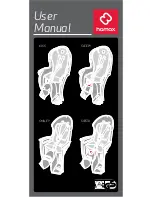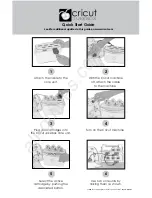
1
IMPORTANT SAFETY
INSTRUCTIONS
For the proper use, maintenance and storage of this battery, it
is crucially important that you read and understand the
instructions given in this manual.
To avoid serious injury, risk of fire, explosion and danger of
electric shock or electrocution:
•
If the battery pack case is cracked or damaged, DO NOT
insert into the charger. Replace with a new battery pack.
•
Charge the battery pack only with the recommended
charger.
•
Use only with Greenworks 82
V
series charger.
•
DO NOT try to short circuit any terminals of battery
pack.
WARNING
If the battery fluid gets in your eyes, flush immediately with
clean water for at least 15 minutes. Get immediate medical
attention. Do not expose the battery pack to rain or wet
conditions. Do not immerse the tool, battery pack, or
charger in water or other liquid.
•
Do not allow the battery pack or charger to overheat. If
they are warm, allow them to cool down. Recharge only
at room temperature.
•
Do not place the battery pack in the sun or in a warm
environment. Keep at normal room temperature.
•
Store in shady, cool and dry environments. If battery has
not been charged for an extended period of time, charge
for at least two (2) hours every two (2) months.
•
The battery pack cells may develop a small leak under
extreme usage or temperature conditions. If the outer seal
is broken and the leakage gets on your skin:
- Use soap and water to wash immediately.
- Neutralize with lemon juice, vinegar, or other mild
liquid.
•
If leakage gets in your eyes, follow instructions above
and seek medical attention.
•
Please check prior use, if output voltage and current of
the battery charger is suitable for the battery pack.
•
Use protective packaging when transporting battery pack.
•
Handle with care.
•
Keep away from humidity and fire.
•
Disconnect the battery pack from the appliance before
making any adjustments, changing accessories, or storing
appliance. Such preventive safety measures reduce the
risk of starting the appliance accidentally.
•
Recharge only with the chargers specified by the
manufacturer. A charger that is suitable for one type of
battery pack may create a rise of fire when used with
another battery pack.
•
This appliance can be used by children aged from 8 years
and above and persons with reduced physical, sensory or
mental capabilities or lack of experience and knowledge
if they have been given supervision or instruction
concerning use of the appliance in a safe way and
understand the hazards involved. Children shall not play
with the appliance. Cleaning and user maintenance shall
not be made by children without supervision.
2
SAFETY NOTES AND
PRECAUTIONS
•
Do not disassemble the battery.
•
Keep away from children.
•
Do not expose battery to water or salt.
•
Battery should be stored in cool, dry location.
•
Do not place the battery in high-temperature locations,
such as near a fire, heater, etc.
•
Do not reverse the positive terminal and the negative
terminal of the battery.
•
When battery pack is not in use, keep it away from other
metal objects like paper clips, coins, keys, nails screws or
other small metal objects that can make a connection
from one terminal to another. Shorting the battery
terminals together may cause burns or a fire.
•
Do not knock, strike or step on the battery.
•
Do not solder directly onto the battery or pierce the
battery with nails or other sharp tools.
•
In the event that the battery leaks and the fluid gets into
one’s eye, do not rub the eye. Rinse thoroughly with
water for at least 15 minutes.
•
Immediately discontinue use of the battery if, while
using, the battery emits an unusual smell, feels hot,
changes color, changes shape, or appears abnormal in any
other way.
3
PROPOSITION 65
WARNING
This product contains a chemical known to the state of
California to cause cancer, birth defects or other
reproductive harm. Some dust created by power sanding,
sawing, grinding, drilling, and other construction activities
contains chemicals known to cause cancer, birth defects or
other reproductive harm. Some examples of these chemicals
are:
•
Lead from lead-based paints;
•
Crystalline silica from bricks and cement and other
masonry products;
•
Arsenic and chromium from chemically treated lumber.
Your risk of exposure to these chemicals varies depending
on how often you do this type of work. To reduce your
exposure to these chemicals, work in a well-ventilated area,
and work with approved safety equipment, such as dust
masks that are specially designed to filter out microscopic
particles.
4
English
EN
Summary of Contents for 82BD250
Page 2: ......

























